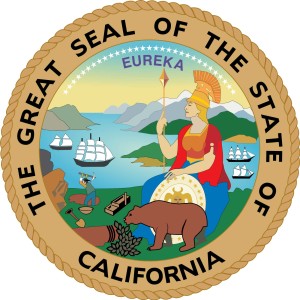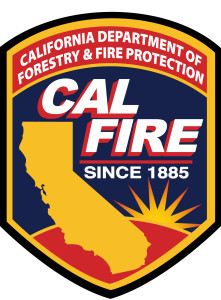
Following is some useful information about having trees removed on private property.
STATE OF CALIFORNIA NATURAL RESOURCES AGENCY
Edmund G. Brown Jr., Governor
CONSERVATION IS WISE-KEEP CALIFORNIA GREEN AND GOLDEN
PLEASE REMEMBER TO CONSERVE ENERGY. FOR TIPS AND INFORMATION, VISIT “FLEX YOUR POWER” AT WWW.CA.GOV

DEPARTMENT OF FORESTRY AND FIRE PROTECTION
MADERA-MARIPOSA-MERCED Unit (MMU)
5366 Highway 49 North
(209) 966-3622
Website: http://www.fire.ca.gov
Tree Info: http://calfire.ca.gov/resource_mgt/resource_mgt_forestpractice.php
Forest Practice Act: http://calfire.ca.gov/resource_mgt/downloads/2014_FP_Rulebook_w_TRA_No.1.pdf
CAL FIRE Tree Removal Information Brochure
STATE REGULATIONS
The California Department of Forestry and Fire Protection (CAL FIRE) enforces the laws that regulate logging on privately owned lands in California.
These laws are found in the Forest Practice Act, which was enacted in 1973 to ensure logging is done in a manner that will protect our natural resources.
The removal of “commercial” timber species from areas of pending new construction, and from the area around existing structures is included under these regulations.
In Madera, Mariposa and Merced counties, the most commonly utilized “commercial” timber species include; but are not limited to; Ponderosa Pine, Sugar Pine, White Fir, Incense Cedar and Black Oak.
These permits are free of charge from CAL FIRE and are submitted to CAL FIRE Fresno Region Headquarters. These documents are used in those situations that are exempt from the requirement of a Timber Harvesting Plan.
The four most commonly used exemption documents are:
1. Removal of Fire Hazard Trees within 150 feet of a Structure Exemption
This exemption permit is required for the removal of selected trees which are located within 150 feet from structures, that are deemed by the landowner to be a potential hazard to any structures, that have been permitted through the County Building Permit process.
This permit is required only if the wood is sold, bartered, exchanged, or traded. A Licensed Registered Professional Forester‘s (RPF) services are not required.
A Licensed Timber Operator (LTO) must be listed on the permit and is responsible for all logging activities.
The Licensed Timber Operator must have an approved copy on-site at the time of operations and has one year to complete timber operations.
Clear-cutting, Shelter Wood Removal and Seed Tree Removal cutting methods are not allowed.
CAL FIRE has up to 5 days to accept the permit.
2. Dead, Dying, or Diseased: Fuel Wood or Split Products Exemption
This exemption permit is required when removing trees that are dead or are obviously dying from insect attack or disease, or when removing fuel wood.
The harvest cannot exceed 10% of the volume per acre. Otherwise a Timber Harvesting Plan is required.
A Licensed Registered Professional Forester‘s services are not required.
This CAL FIRE permit is required only if the wood is sold, bartered, exchanged, or traded.
CAL FIRE has up to 5 days to accept the permit. This permit is valid for 1 year.
3. Notice of Emergency Timber Operations
An emergency notice is required to salvage trees that are dead and dying when the harvest exceeds 10% of the total volume per acre.
Emergency conditions include trees that are dead or dying as a result of insects, disease, fire, wind throw etc.
The Registered Professional Forester (RPF) preparing the Notice of Emergency Timber Operations shall describe the nature of the emergency and the need for immediate harvesting.
Timber operations pursuant to an emergency notice may not commence for five working days from the date of the Director’s receipt of the notice unless such waiting period is waived by the Director.
The emergency notice is valid for one year.
4. Less than 3 Acre Conversion Exemption
This one-time exemption permit is required for property owners who intend to clear for structures and other needed improvements (i.e. driveways, utility lines, out buildings, septic systems, etc.) in preparation for such development.
This permit is required whether or not the trees are sold, bartered, exchanged, or traded.
There are other uses for this conversion form and each situation is unique.
Consult your local CAL FIRE Forester for more information.
A Registered Professional Forester (RPF) must prepare this permit and a Licensed Timber Operator (LTO) must conduct timber operations.
The Licensed Timber Operator must have a copy of the exemption on-site at the time of operations and has one year to complete timber operations.
Responsibility for treatment of logging slash and woody debris may be assumed by the landowner, provided that the landowner acknowledges in writing to the Director, at the time of notice, such responsibility and specific slash and woody debris treatment requirements and timing.
The land owner must submit to CAL FIRE in Mariposa, a Work Completion Report within one month of completion of timber operations.
Building contractors are ineligible to perform this work unless they are a Licensed Timber Operator.
CAL FIRE has up to 15 days to accept the permit This permit is valid for 1 year.
Terms & Conditions
Specific terms and conditions apply to all permits, including logging debris clean-up requirements and protection of wildlife, archaeological sites, water quality, and other natural resources.
Before hiring an LTO, be sure to ask the LTO for proof of valid insurance or call CAL FIRE LTO Licensing at (916) 653-7211.
A state filing fee is not imposed for the three forms, however the person listed on the form as a Timber Owner will be required to pay a post-harvest yield tax based on the board foot volume of timber removed from the parcel to the State Board of Equalization.
Small amounts of timber may be exempt from yield tax.
A complete listing of these and other CAL FIRE forms and information can be found at:
http://www.fire.ca.gov/resourcemanagement/harvestingforms.asp
Currently (April 2015), Len Nielson is the CAL FIRE Unit Forester for Madera, Mariposa, and Merced Counties
(209-742-1907) or Len.Nielson@fire.ca.gov
Mr. Nielson is available to:
- Advise landowners through the permit process.
- Consult on best management strategies for individual properties.
- Assist with contacting a Registered professional Forester or Licensed Timber Operator.

